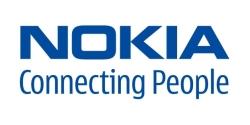Nokia
We’re Updating Our Profiles Section
Stay tuned for all new and updated exclusive profiles on companies and organizations involved in the ecosystem.

To those who criticize Nokia for the rather bland handsets it has outfitted with NFC and put onto the market, the handset maker responds–with some justification–that it has done more than any other phone maker to advance NFC technology.
Since co-founding the NFC Forum, the industry’s major trade group, in early 2004 with NFC co-creators Philips Semiconductors and Sony, Nokia has introduced NFC versions of four handsets. The phones have been the workhorses of most of the dozens NFC trials held to date. (See Project Database).
Another phone, the Nokia 6216, was delayed, then Nokia pulled the plug on the project. The 6216 was to be another mid-tier feature phone, like the others, except that it was to support a standard connection to the SIM card, which then could have stored payment, ticketing or other applications securely in the phones. Nokia has resisted the move by mobile operators to establish the SIM card as the preferred secure chip to store the NFC applications. This gives the telcos more control over the applications since operators issue the SIMs.
Then in June 2010, Nokia announced it would begin to move its Symbian smartphones to NFC. It then quietly began shipping its first Symbian-based NFC phone, the C7, in October 2010, though the handset maker said the phone model needed an NFC software upgrade before the NFC features would work.
Some observers have thought Nokia had its own plans for controlling the phone, even becoming an NFC service provider in its own right and using a secure chip it embeds in the phones, rather than the SIM, to store applications.
In August 2009, Nokia announced plans to launch Nokia Money, a purely network-based service, with which the handset maker hopes to enable consumers to send money, pay bills, make purchases with merchants and top-up prepaid mobile accounts. All money transfers and payment would use SMS or another network channel and would target developing countries, where bank accounts and payment cards are scarce.
Of course, Nokia could eventually try to put the Nokia Money application onto NFC phones to allow for proximity payment. It would need an acceptance infrastructure of contactless readers to make such an idea work, however. That's unlikely to happen soon in the target market.
In any case, Nokia appears to be keeping its options open to insure the SIM card does not control all applications that get downloaded to NFC phones. After losing a standards battle in the mobile operator’s den, the SIM committee of the European Telecommunications Standards Institute, the handset maker went to the NFC Forum in mid-2009 to adopt what some consider a competing standard.
Meanwhile, Nokia says it plans to introduce more NFC phones, some of them high-end. Anssi Vanjoki, who will lead the effort to revamp Nokia's troubled smartphone division, announced in June 2010 that beginning in 2011, Nokia's Symbian smartphones would begin to support NFC globally. Vanjoki apparently sees NFC as a way to beat back the challenge from Apple's iPhone and makers of Android-based smartphones.
| Phone Figures |
Q3 2008 | Q4 2008 | Q1 2009 | Q2 2009 | Q3 2009 |
| Handset Shipments | 117.8 | 113.1 | 93.2 | 103.2 | 108.5 |
| Global Market Share | 38.5% | 38.5% | 38.1% | 37.8% | 37.8% |
| In millions of units Source: Strategy Analytics |
|||||
Samsung, LG, Apple, HTC












